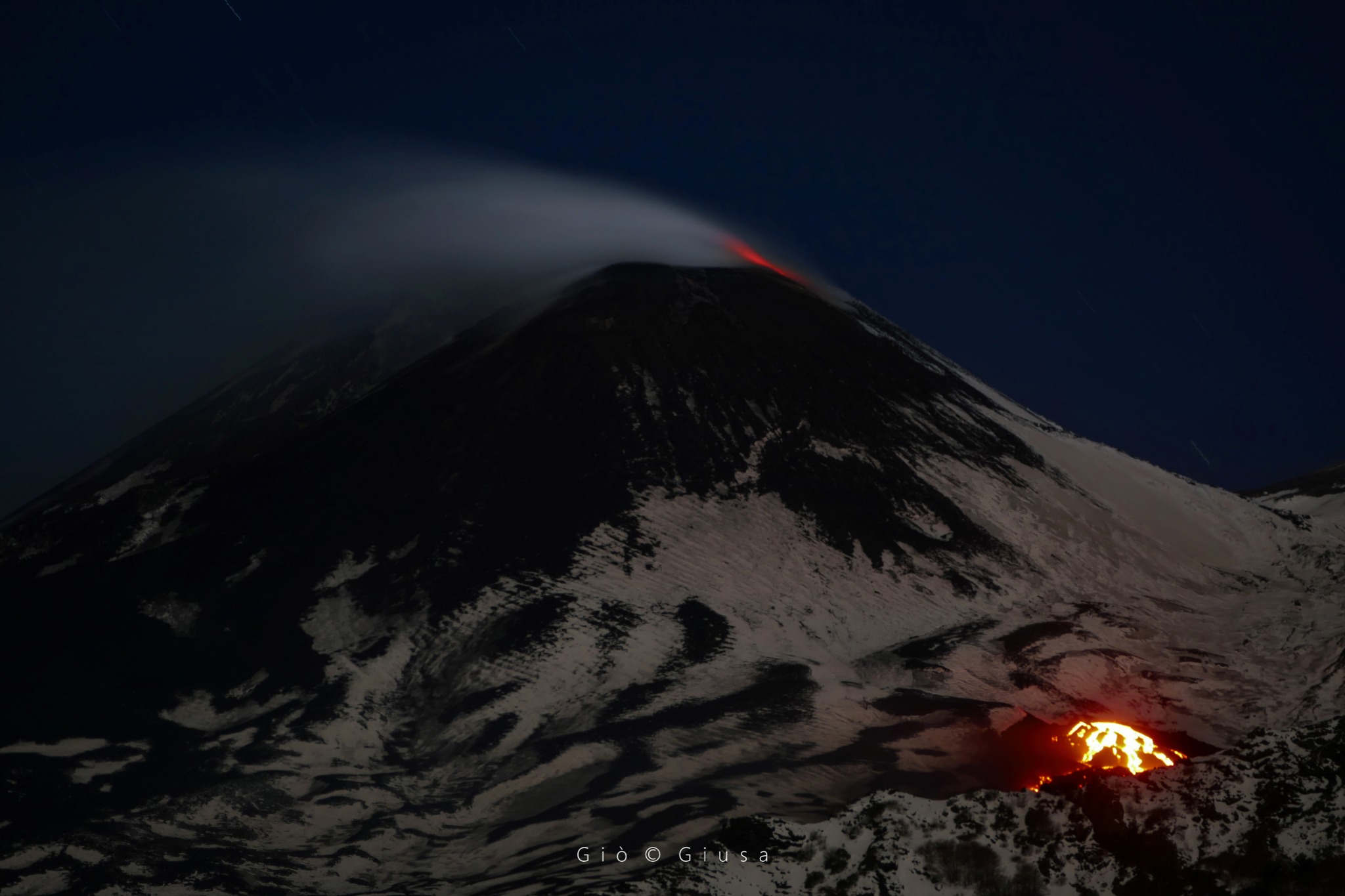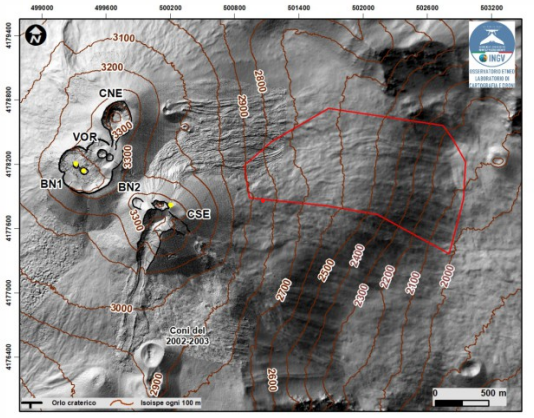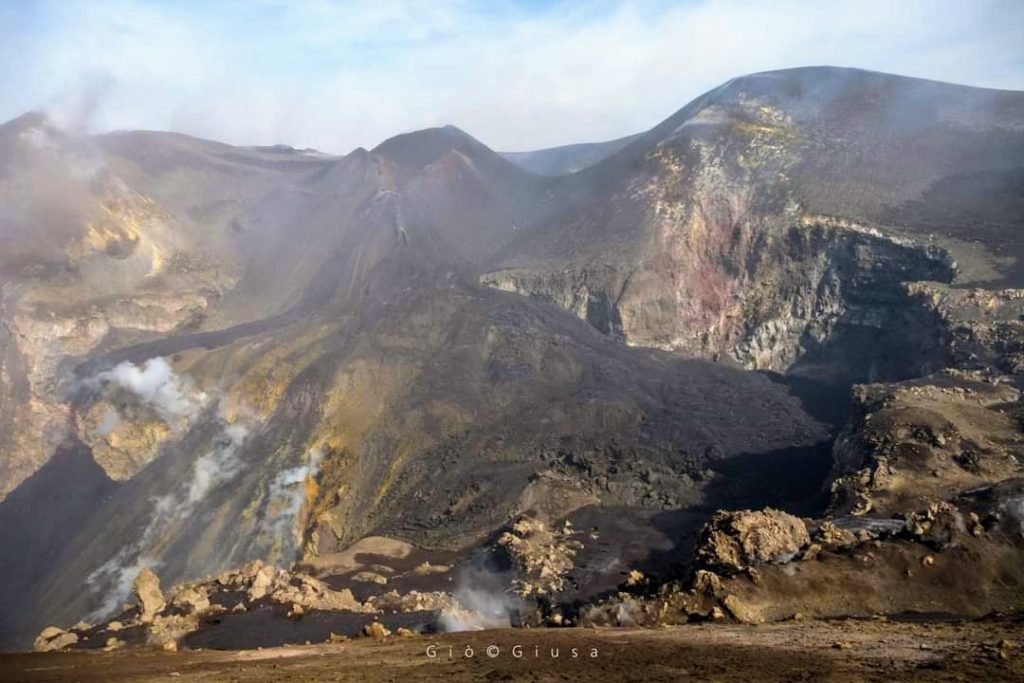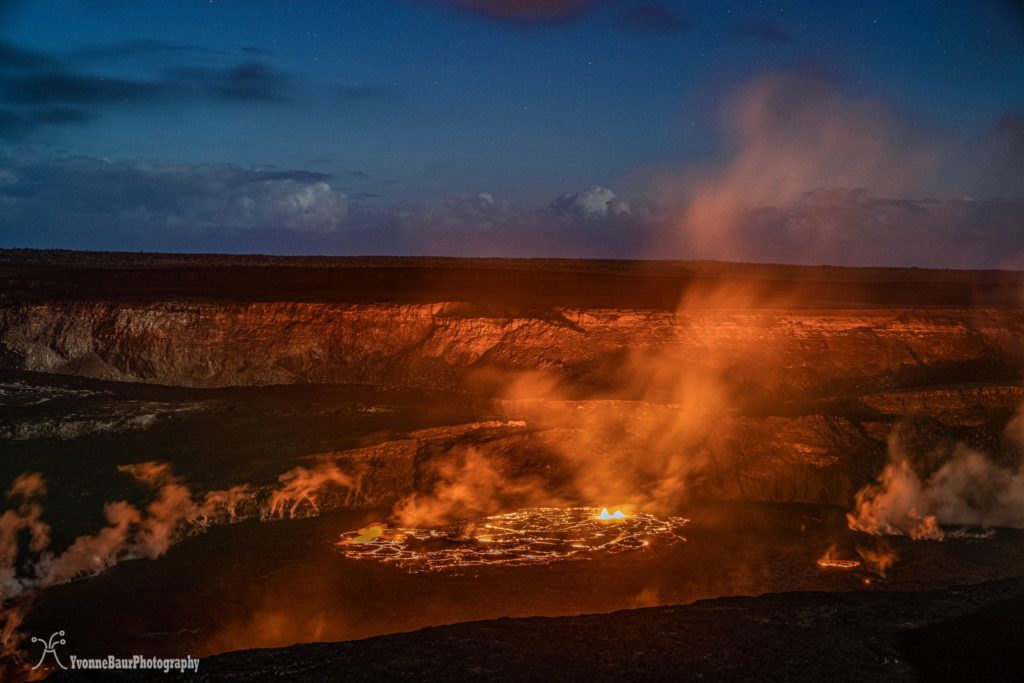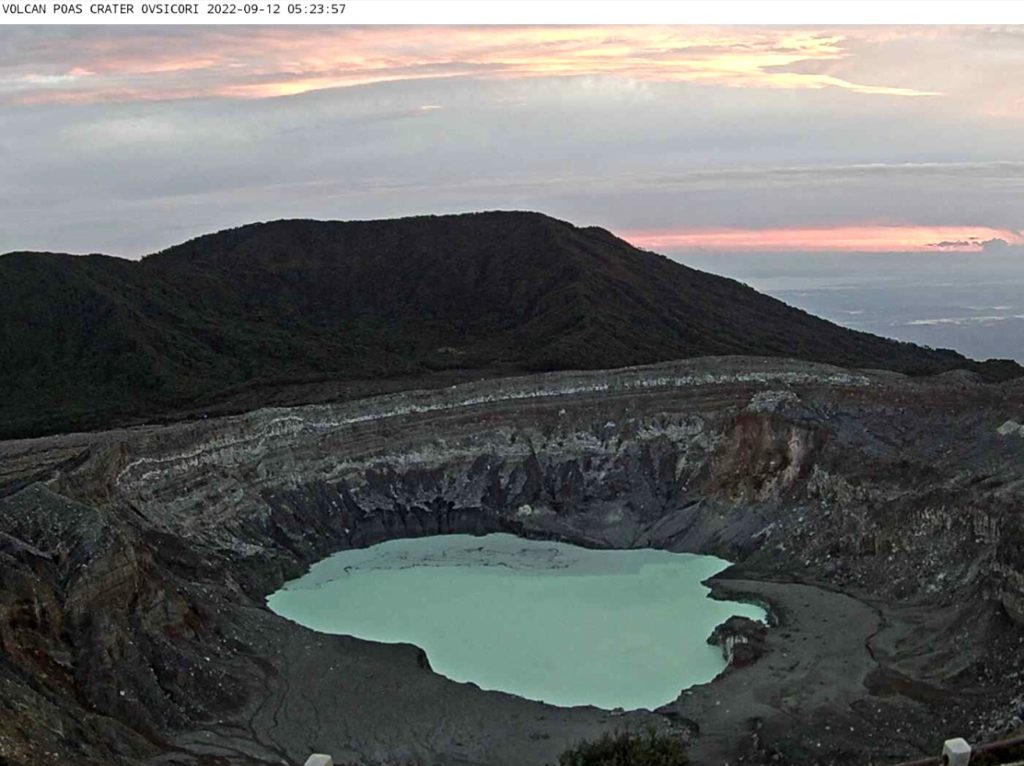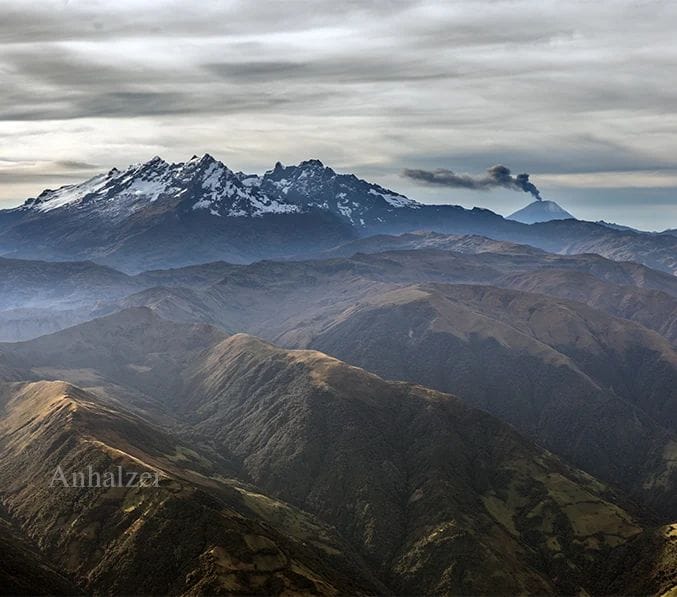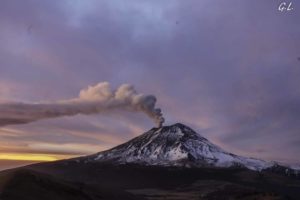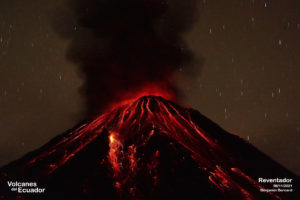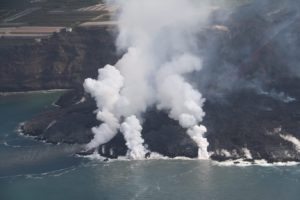February 08 , 2023.
Italy / Sicily , Etna :
WEEKLY BULLETIN, from January 30, 2023 to February 05, 2023. (issue date 07 February 2023)
ACTIVITY STATUS SUMMARY
In the light of the monitoring data, it is highlighted:
1) VOLCANOLOGICAL OBSERVATIONS: Effusive activity with lava flows in the Vallée del Léon, variable rate degassing of the summit craters associated with modest and sporadic emissions of ash from the Southeast crater.
2) SEISMOLOGY: Increase in the rate of occurrence of fracturing earthquakes and energy releases. Stationarity of volcanic tremor parameters.
3) INFRASOUND: Moderate to high infrasound activity with sources located in the Southeast Crater and Bocca Nuova areas.
4) GROUND DEFORMATIONS: Ground deformation monitoring networks have not measured any significant changes over the past week
Shaded model of the relief of the summit craters of Etna obtained by processing drone images acquired during several overflights (September 15 and 21, 2022, October 6, 21 and 23), superimposed on the shaded model from the Pléiades images of August 22, 2020 ( AO Telerivamento). CSE = Southeast Crater, CNE = Northeast Crater, BN = Bocca Nuova, VOR = Voragine. The red polygon delimits the area of current effusive activity.
5) GEOCHEMISTRY: SO2 flux at an average level.
The soil CO2 flux values recorded last week are medium to low values.
The partial pressure of CO2 dissolved in groundwater (EtnaAcque Network) does not show any variations apart from the seasonal variability of the site.
The data of the isotopic composition of helium from the last sampling (03-02-2023) do not show significant changes compared to the previous ones, reaching a high level.
6) SATELLITE OBSERVATIONS: The thermal activity observed by satellite in the summit zone was of a high level in correspondence with the effusive eruption in the summit zone. However, since the evening of February 5, only low heat flux values have been recorded, signaling an interruption in effusive activity.
VOLCANOLOGICAL OBSERVATIONS
During the week, the monitoring of Etna’s activity was carried out through the network of surveillance cameras of the INGV – Osservatorio Etneo.
During the week in question, the modest effusive activity, which began on November 27, 2022, continued from the mouth that opened at the northeast base of the Southeast crater at an altitude of ‘about 2800 m, which was however characterized by large fluctuations. This activity produces the thrust of lava flows in the Valle del Leone area and on the west wall of Valle del Bove.
In particular, from the early hours of the morning of February 1, the lava flow underwent a sudden increase, to then gradually decrease during the night between February 1 and 2 until it stopped completely in the early morning hours of 2 . The flow regained strength in the early afternoon of February 2 producing new overlays of lava flows over the pre-existing lava field. From the afternoon of February 4 and into the night of February 4-5, the flow shows a gradual decrease and the lava field appears to be cooling.
During the week under examination, the most advanced fronts of the lava field remain confined to an altitude between approximately 2590 and 2030 m. and, in particular, at an altitude of 2590 m on February 03. The total area covered by lava flows from November 27, 2022 until February 03, 2023 is equal to 9.6 x 10^5 m^2 while the total volume is between 4.8 and 6.1 x10^6m^3. This estimate is preliminary and an error of approximately 40% is estimated.
The activity of the summit craters was characterized almost exclusively by degassing at a variable rate, mainly to the detriment of the crater of Bocca Nuova (BN) where the intense impulsive degassing that has characterized it for months continued.
The Southeast crater (SEC) rather presents a degassing of variable intensity, fed mainly by the fumaroles located along the edge of the crater, inside the niche formed by the collapse of the flank of February 10, 2022 and by the May-June 2022 eruptive vent, which featured frequent lightning visible at night, rarely accompanied by thermal anomalies, as well as modest emissions of dilute ash rapidly dispersed in the summit area by high-altitude winds.
Finally, with regard to the Voragine crater (VOR) and the Northeast crater (NEC), only weak degassing activity is observed from the surveillance cameras.
Statement on the volcanic activity of Etna, February 07, 2023, 7:36:16.
The National Institute of Geophysics and Volcanology, Osservatorio Etneo, communicates that the effusive activity that began on November 27, 2022, from the afternoon of February 4, showed a gradual decrease and is currently no longer fed. The lava field in the Valle del Leone area and on the west wall of Valle del Bove appears to be cooling. At present, the Southeast crater shows fumarolic degassing of varying intensity accompanied by frequent eruptions visible during the night, rarely associated with thermal anomalies and modest emissions of dilute ash rapidly dispersed in the summit area by high altitude winds.
From a seismic point of view, the average amplitude of the volcanic tremor is at a globally medium-low level. The source of the volcanic tremor is located in correspondence with the summit craters at an altitude of about 2600 m above sea level. Infrasonic activity is weak.
Regarding the deformations of the soil of the volcanic edifice, the data from the GNSS and inclinometer networks do not show any significant changes to report in recent days.
Source : INGV.
Photos : Gio Giusa.
Italy , Stromboli :
WEEKLY BULLETIN, from January 30, 2023 to February 05, 2023. (issue date 07 February 2023)
ACTIVITY STATUS SUMMARY
In the light of the monitoring data, it is highlighted:
1) VOLCANOLOGICAL OBSERVATIONS: During this period, normal Strombolian activity was observed with spattering activity in the North crater area and an explosive sequence in the South Center crater area.
The total hourly frequency fluctuated between medium-low (7 events/h) and medium (1 event/h) values.
The intensity of the explosions was mainly medium and low in the North crater area and medium-high in the South Center crater area.
2) SEISMOLOGY: The seismological parameters do not show any significant variations, with the exception of the occurrence of the sequence of explosions of greater amplitude than the ordinary activity recorded on 01/30.
3) GROUND DEFORMATIONS: The ground deformation monitoring networks did not show any significant variations.
4) GEOCHEMISTRY: The flow of SO2 at an average and increasing level
CO2 flux in the crater area: stable on average values
CO2/SO2 ratio on average values (11.7).
Isotope ratio of helium dissolved in the heat sinks on average values with R/Ra equal to 4.33.
5) SATELLITE OBSERVATIONS: The thermal activity observed from the satellite was generally weak.
VOLCANOLOGICAL OBSERVATIONS
The explosive activity was mainly produced by 3 (three) eruptive vents located in the North crater area and one located in the Center-South area.
On January 30, 2023 an explosive sequence affected the vents located in the area of the Center-South crater
Observations of explosive activity captured by surveillance cameras
In the area of the North crater (North), the three vents of the two sectors N1 and N2 were characterized by an explosive activity of variable intensity from low (less than 80 m in height) to medium (less than 150 m in height) with emission of coarse materials (bombs and lapilli)). Projection activity from vents located in the N2 sector was intense for short periods on January 31 and February 5. The average frequency of explosions varied from 1 to 7 events/h.
In the Center-South zone (CS) an explosive activity of medium and high intensity was observed (sometimes the products exceeded 150 in height) emitting coarse materials mixed with fine materials (ash). The frequency varied between 3 and 5 events/h.
Explosive sequence of January 30, 2023.
At 09:07:53 UTC on January 30, a high-energy explosive sequence was produced by the Central-South Zone vents. The sequence was characterized by a first pulse, the most energetic, lasting about 45 s, whose mainly coarse products exceeded 300 m in height and fell in an East-South-East direction. Subsequent explosions of less intensity which reached a height of 100 m completed the explosive sequence. The total duration of the event was approximately 2 min.
Source : INGV.
Photos : Stromboli Stati d’animo / Sebastiano Cannavo.
Hawaii , Kilauea :
Tuesday, February 7, 2023, 9:20 AM HST (Tuesday, February 7, 2023, 19:20 UTC)
19°25’16 » N 155°17’13 » W,
Summit Elevation 4091 ft (1247 m)
Current Volcano Alert Level: WATCH
Current Aviation Color Code: ORANGE
Activity Summary:
The summit eruption of Kīlauea Volcano, within Halemaʻumaʻu crater, continued over the past 24 hours. All recent eruptive activity has been confined to the crater. No significant changes have been observed at the summit or in either rift zone.
Halemaʻumaʻu crater Lava Lake Observations:
Eruption of lava in four locations of Halemaʻumaʻu crater floor continued over the past 24 hours. The eastern lake remains stable and activity within this lake remains about 25 acres in size. The small southern lava fountain within the eastern lake is active and remains at normal heights of 1-2 m (3-6 ft). The smaller western lake in the basin of the 2021–2022 lava lake as well as the two smaller lava ponds in the central and south portions of the crater floor remain active and unchanged, with no overflows in the past day. The large breakout on the northern portion of the crater floor remained weakly active over the past 24 hours.
Summit Observations:
Summit tiltmeters remain flat (no inflationary or deflationary trends) over the past day. Volcanic tremor remains above background levels. A sulfur dioxide (SO2) emission rate of approximately 2,800 tonnes per day (t/d) was measured on February 6, 2023.
Source : HVO
Photo : Yvonne Baur / FB.
Costa Rica , Poas :
Latitude: 10.20°N;
Longitude: 84.23°W;
Altitude: 2687m
Current activity level: warning
Possible manifestations:
Small eruptions, gush or geyser, significant gas emission, temperature rise (incandescence), seismic swarms or volcanic tremor, slight inflation-extension of the volcanic edifice.
Seismicity has remained stable since last year, with a permanent tremor of 3.2 Hz, and intermittent tremors of 6.8 and 9.9 Hz, in addition to frequent volcanic earthquakes of low frequency and very low amplitude. Geodetic observations show a very slight extension of the volcanic massif. The temperature of Laguna Caliente is 38°C (pH = 0.25).
However, the level of the lagoon has dropped by about 40 cm. The composition of the water has not changed since last month and continues to be higher in its chloride content than sulphate.
The SO2 flux is relatively stable (184 ± 70 t/d). Gas ratios measured in the plume remain within normal ranges with weekly averages of SO2/CO2 of 0.55 +/- 0.08 and H2S/SO2 of <0.01. The SO2 concentration at the lookout remains low with a weekly maximum of 2.9 ppm. The hyperacidic Poás Lake recorded a temperature of 38°C on January 31, 2023, which is 4°C lower than in January 2023. Hot spring 2 at the bottom of the East terrace maintains an average temperature of 69.5°C .
Source et photo : Ovsicori.
Ecuador , Sangay :
DAILY REPORT OF THE STATE OF SANGAY VOLCANO, Tuesday February 07, 2023.
Information Geophysical Institute – EPN.
Surface Activity Level: High, Surface Trend: No change
Internal activity level: High, Internal trend: No change.
Seismicity: From February 06, 2023, 11:00 a.m. to February 07, 2023, 11:00 a.m.:
For seismicity statistics, there are 20 hours of operation at the reference station.
Explosion (XP) 64
Emission Tremors (TREMI ) 24
Long Period (LP): 18
Rains / Lahars:
In the afternoon of yesterday, there were rains in the area of the volcano. *In the event of heavy rains, these could remobilize the accumulated materials, generating mudslides and debris that would descend the flanks of the volcano and flow into the adjacent rivers.**
Emission / Ash Column:
No surface level emissions were observed. In the past 24 hours, the Washington VAAC has not released any ash emission statements. So far, no ash fall has been reported.
Gas:
The MOUNTS system detected 230 tons of sulfur dioxide (SO2), measured on 2023-06-02 at 1:18 p.m. TL
Other Monitoring Parameters:
The MIROVA-VIIRS system records 1 low thermal alert and 1 moderate thermal alert, the MIROVA-MODIS system records 1 low thermal alert and the FIRMS system records 7 thermal alerts in the last 24 hours.
Observation: Currently the volcano area is cloudy.
Alert level: Orange.
Source : IGEPN.
Photo : Jorge Anhalzer.

